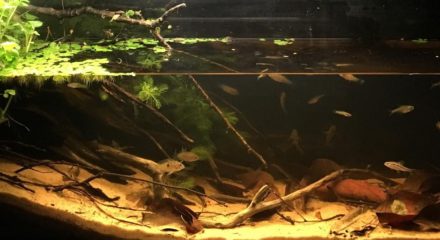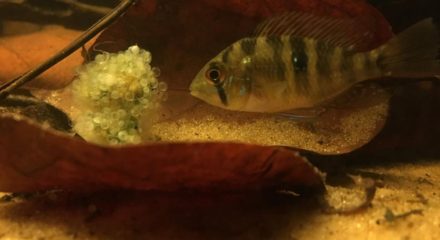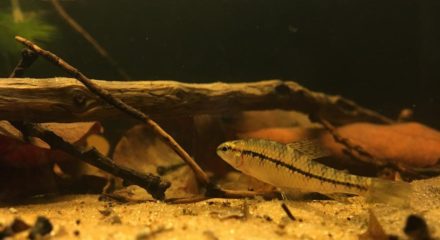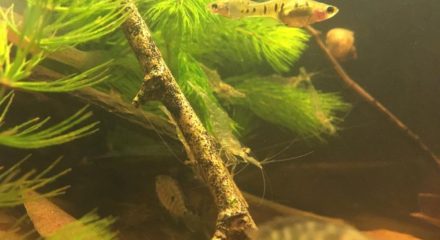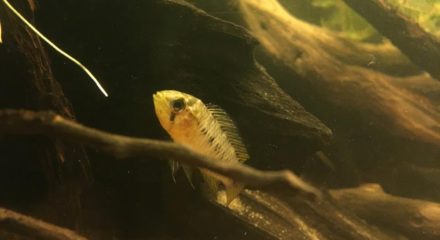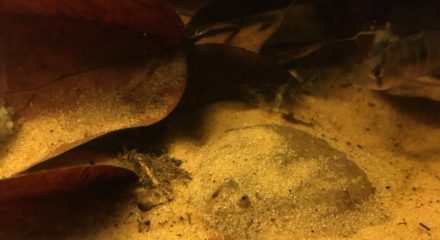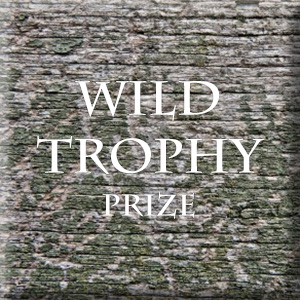 Miriñay tributary of the river during the rainy season, Corrientes Argentina
Miriñay tributary of the river during the rainy season, Corrientes Argentina
17th place in Biotope Aquarium Design Contest 2016
![]() Argentina. Ivan Martinez
Argentina. Ivan Martinez
Aquarium Volume: 90 L
Fish and invertebrates: Chiclasoma dimerus, Gymnogeophagus sp., Palaemonetes argentinus, Chraracidum rachorvii, Astyanax spp., Hyphessobrycon spp., Achirus sp., Apistogramma borelli, Jenynsia multidentata, Corydora paleatus, Cnesterodon decemmaculatus
Plants list: Hydrocotyle sp., Ceratophyllum demersum, Myriophyllum aquaticum, Eclipta bellidioides, Nasturtium officinale, Juncus sp., Lemma biloba, Limnobium sp., Azolla sp.
Biotope description: The biotope recreates the margins of the tributaries that are generated in the rainy season (September to December) of the rising “Miriñay River”, the same is located in the southeast of the Corrientes province in Argentina. This region has a humid subtropical climate and is belong to the “Esteros del Ibera”, one of the biggest and most biodiverse wetlands in South America. That tributaries being part of the Uruguay River basin so it has a substrate formed by fine and coarse eolian sand, yellow to light brown in color, along with the leaves and trunks of trees falling on it and decompose. Water parameters are low hardness and a pH in the range of 6.4-7.3 and an average temperature of 20ºC. As they are lotic waters whith very low speed, in times of flood the following phenomena are observed: riparian vegetation (mainly represented by families Poaceae and Cyperaceae) enters the body of water; floating plants colonize the margins; and parts of the tree roots enter the tributary. Different biogeographic components meet in the region giving an ecotonal character and the ability to host a great animal biodiversity: Within invertebrates predominate gastropod mollusks (Pomacea spp.), Penneidos crustaceans (Palaemonetes sp.) and different species hexapods larvae; On the side of vertebrate fish are those with the greatest abundance with over 150 species grouped in 11 orders. Particularly in the margins of affluent individuals belonging predominate families of small Characidae and Ciclidae.
Fish and invertebrates: Chiclasoma dimerus, Gymnogeophagus sp., Palaemonetes argentinus, Chraracidum rachorvii, Astyanax spp., Hyphessobrycon spp., Achirus sp., Apistogramma borelli, Jenynsia multidentata, Corydora paleatus, Cnesterodon decemmaculatus
Plants list: Hydrocotyle sp., Ceratophyllum demersum, Myriophyllum aquaticum, Eclipta bellidioides, Nasturtium officinale, Juncus sp., Lemma biloba, Limnobium sp., Azolla sp.
Biotope description: The biotope recreates the margins of the tributaries that are generated in the rainy season (September to December) of the rising “Miriñay River”, the same is located in the southeast of the Corrientes province in Argentina. This region has a humid subtropical climate and is belong to the “Esteros del Ibera”, one of the biggest and most biodiverse wetlands in South America. That tributaries being part of the Uruguay River basin so it has a substrate formed by fine and coarse eolian sand, yellow to light brown in color, along with the leaves and trunks of trees falling on it and decompose. Water parameters are low hardness and a pH in the range of 6.4-7.3 and an average temperature of 20ºC. As they are lotic waters whith very low speed, in times of flood the following phenomena are observed: riparian vegetation (mainly represented by families Poaceae and Cyperaceae) enters the body of water; floating plants colonize the margins; and parts of the tree roots enter the tributary. Different biogeographic components meet in the region giving an ecotonal character and the ability to host a great animal biodiversity: Within invertebrates predominate gastropod mollusks (Pomacea spp.), Penneidos crustaceans (Palaemonetes sp.) and different species hexapods larvae; On the side of vertebrate fish are those with the greatest abundance with over 150 species grouped in 11 orders. Particularly in the margins of affluent individuals belonging predominate families of small Characidae and Ciclidae.
Photo Gallery
Comments of the members of the jury of Biotope Aquarium Design Contest 2016

I like the natural look and mix of fish with this Argentinian biotope aquarium, and it combines cichlids, characins and even livebearers with invertebrates including shrimp and snails. The tank looks like a flooded area where those sorts of fish would hang out and invertebrates play such a major part in all the freshwater habitats I have visited. An effective medium sized biotope aquarium.

Rare fish, nicely arranged bottom, healthy plants above water. In my opinion this tank is too small for such a large amount of species – but still very good looking.

